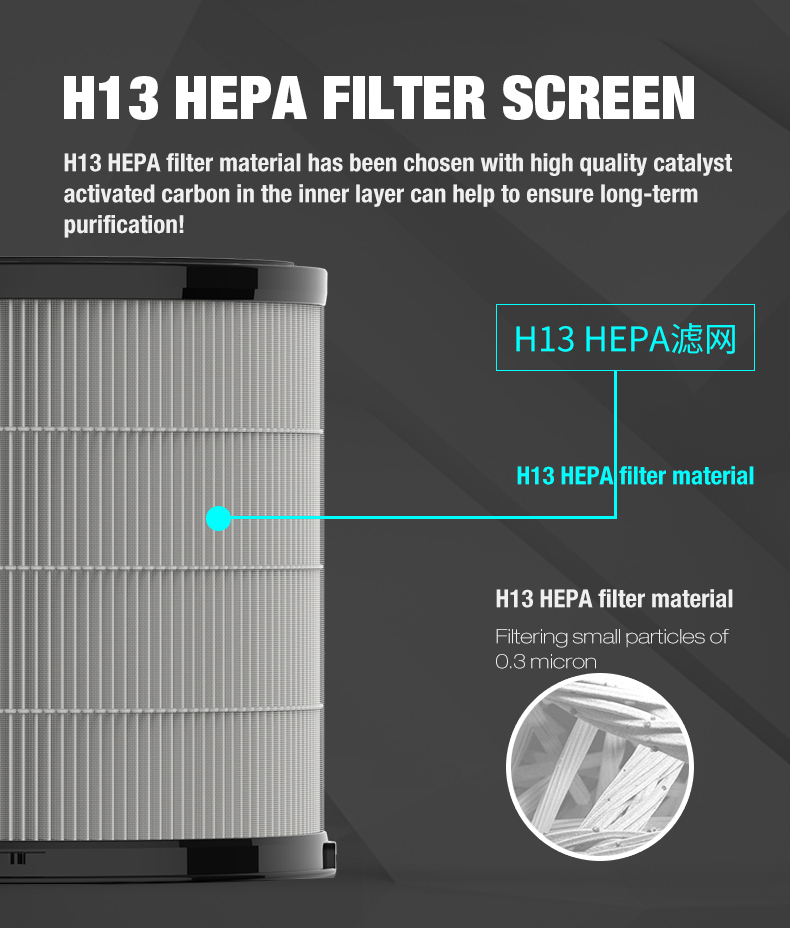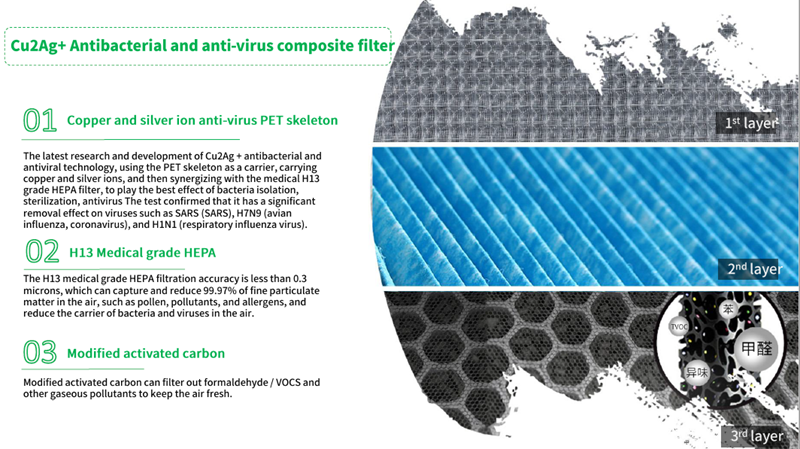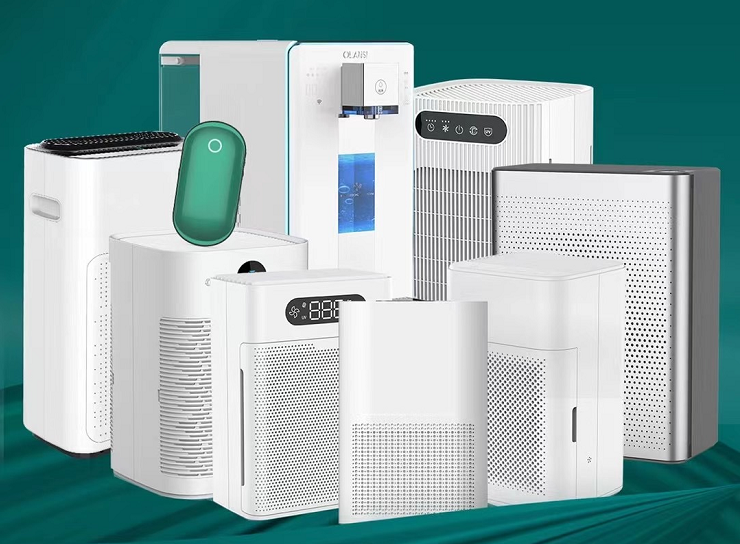First, check the sealing,
Air purifier has a certain purification effect on air impurities, but there is no complete purification ability, because it can not circulate the whole room, but the sealing of the air purifier is one of the key elements of the effect of the air purifier. Because of the poor sealing of the purifier, a lot of polluted air can not “pass through” the filter element, but from the corner of the purifier “leak”. Only with good sealing, all polluted air can pass through the filter element and be fully filtered, the single purification efficiency of the purifier can be guaranteed. But better sealing means more wind resistance and more noise. Therefore, the practice of ordinary purifiers is that the filter element is thin, the sealing is almost bad, and the purification efficiency is low. This allows the room air to be filtered more times per hour with a larger air volume. But this “extensive” filtration mode, only suitable for the purification of the general consumer is not high;
Second,check the quality of the filter ,
At present, high-end air purifiers in the world adopt pure physical filtration technology without exception. Therefore, the quality of the filter element plays a decisive role in the purification effect. For example, the grade of HEPA filter element, theoretically speaking, the higher the grade of HEPA filter element, the higher the filtering efficiency of particulate matter. For example, in activated carbon filter element, the level of modification technology determines the adsorption efficiency of activated carbon filter element. There are alumina, zeolite and other filtration materials with low adsorption efficiency to replace or partially replace high-quality activated carbon filter, these will also have a negative impact on the efficiency of activated carbon filter adsorption formaldehyde and other chemical gaseous pollutants;
Third, check the weight of the filter,
Generally speaking, whether it is activated carbon filter element, or HEPA filter element (including anti-microbial filter element), the thicker the filter element, the heavier the weight, the higher the adsorption and filtration efficiency. However, the thicker the filter element is, the greater the wind resistance is, the higher the requirements for the wind system are, and the manufacturing difficulty and cost of the whole purifier are also higher. So many air purifiers on the market with relatively thin HEPA filter and activated carbon filter, the new national standard, and according to the existing air purifier this thin filter with the shorter the distance from the wind (that is, pollute the air through the filter of distance), it is easy to achieve greater CADR value (both formaldehyde and particulate matter) and the value of CCM, It is easier to be accepted by consumers. However, in fact, this thin activated carbon filter element and HEPA filter element, the capacity of pollutants is low, easy to saturation, short life, especially adsorption and purification efficiency is low;
Fourth, check the matching of filter element and wind system,
A lot of people think air purifiers are low-tech. Many common purifiers on the market are basically composed of a fan and a number of filtering materials placed inside the shell. In general, it filters out a lot of pollutants. But it’s not really an efficient air purifier. What kind of structure and how thick and multiple filter elements are used by air purifiers need to be determined by strict testing and calculation. If the filter element is not well matched with the wind system, it is easy for large particles to penetrate the HEPA filter element, resulting in the loss of “efficiency” of the HEPA filter element. For example, if the same medical-grade HEPA filter element is installed on two different purifiers, the purification efficiency of the air purifier may be completely different: the professional purifier will strictly match the corresponding filter element according to the requirements of the wind system, in combination with the structure of the purifier, the wind passage distance and other factors. For example, HEPA filter element is pre-activated carbon filter element, anti-microbial filter element and primary effect filter element of filtering large particles, and these different filter elements “each plays its own role”, so as to achieve the purpose of making HEPA filter element mainly filter PM2.5 ultra-fine particles; As a result, although the HEPA filter element is of the same medical grade, due to excessive air volume and thin filter element, it is likely that in a very short time after the purifier is turned on, large particles (such as PM10, PM5, PM3 and PM2.0) will “penetrate” the HEPA filter element. Thus, the HEPA filter element “fails” for ultrafine particles such as PM0.5. And whether the ultrafine particles below PM0.5 can be efficiently filtered is one of the important evaluation criteria of whether the purifier is “effective” from the health perspective.
OLANSI has own filter factory, EPA factory with BSCI, can reach EN1822.
Welcome customized.






